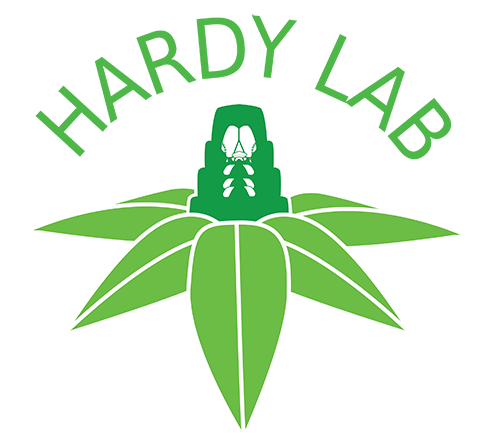Valid Names Results
Sclerosococcus tillandsiae Lambdin, 1980 (Asterolecaniidae: Sclerosococcus)Nomenclatural History
- Sclerosococcus tillandsiae Lambdin 1980: 470. Type data: ECUADOR: on Tillandsia sp.. Holotype, female, Type depository: Washington: United States National Entomological Collection, U.S. National Museum of Natural History, District of Columbia, USA; accepted valid name Illustr.
Common Names
Ecological Associates
Hosts:
Families: 1 | Genera: 1
- Bromeliaceae
- Tillandsia | Lambdi1980
Geographic Distribution
Countries: 1
- Ecuador | Lambdi1980
Keys
- GranarGoSt2023: pp.15 ( Adult (F) ) [Species of Sclerosococcus]
Remarks
- Systematics: S. tillandsiae differs from S. bromeliae by the presence of 7-locular pore clusters in a marginal band on cephalothorax, 4-5 transverse abdominal rows of 7-locular and quinquelocular pores, and more numerous 8-shpaed tubular ducts on dorsal and ventral surfaces. It differs from S. ferrisi by possessing 4-5 transverse rows of pores on posterior abdominal segments, membranous apical abdominal segments, rather than heavily sclerotized, and 8-shaped tubular ducts about one-half the size as those on S. ferrisi. S. tillandsiae shares all above described traits with S. chilensis. (Lambdin, 1980)
- Structure: Ovoid, 900-1663 μm long, 582-999 μm wide for slide mounted specimens, derm membranous. Dorsal surface: Two sizes of 8-shaped tubular ducts; smaller ducts arranged in segmental rows, each 9-12 μm long, 8-shaped pore surface 3-4 μm long, 2-4 μm wide; larger pores on margin and in transverse rows on last 2 abdominal segments, each 10-15 μm long, 8-shaped pore surface 4-5 μm long, 4-5 μm wide. Ventral surface: Antennae unsegmented, 19-25 μm long, 12-16 μm wide; with 5 fleshy setae, each 13-22 μm long. Clypeolabral shield 247-282 μm long, 144-192 μm wide. Labium unsegmented, 51-99 μm long, 77-117 μm wide; with 3 pairs of setae, each 7-11 μm long. Spiracles 30-41 μm long, 10-14 μm wide, atrial opening 4-6 μm in diameter; anterior spiracle with 6-17 associated 7-locular pores, posterior spiracle with 7-23 pores. (Lambdin, 1980)
- General Remarks: Description and illustration by Lambdin (1980).
Illustrations
Citations
- Ahmed2012: host, 9
- GranarGoSt2023: distribution, host, key, 15
- Lambdi1980: description, distribution, host, illustration, taxonomy, 470-471


